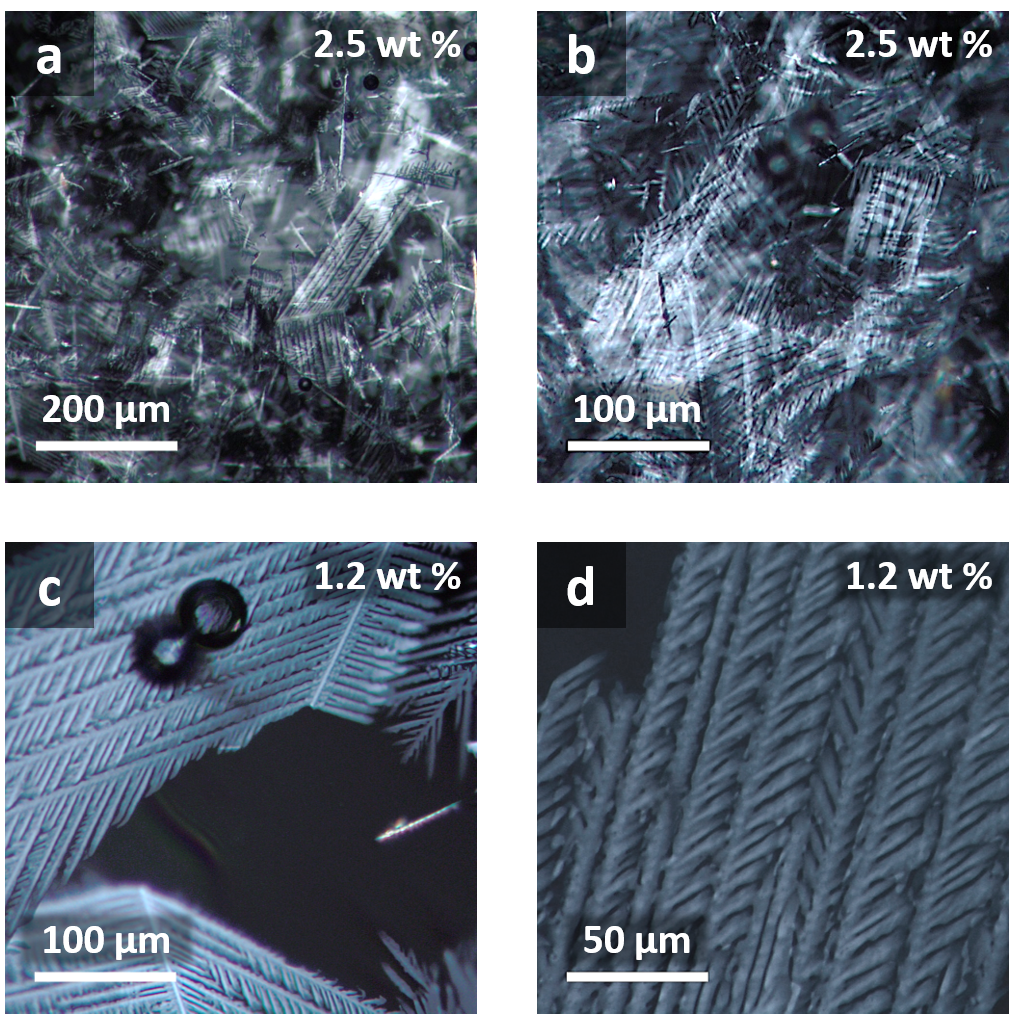Deep eutectic solvents are good solvents for many inorganic and organic species, including surfactants. They are considered an environmentally friendly, or 'green' option for industrial applications from electroplating to personal care product formulations, in which surfactants are commonplace.
The way surfactants and other particles self-assemble in these solvents is important to understand when we consider their industrial application, but it is not yet well understood. This study, published in Phys Chem Chem Phys, investigated the self-assembly of the surfactant SDS in glyceline; a deep eutectic solvent made of glycerol and choline chloride.
The researchers used polarised light microscopy to initially look at the microstructure of the gel that formed, and then used small angle neutron scattering on Loq to characterise it on the nanoscale. They found that the surfactants aggregated in an unexpected way, forming dendrites with an almost never-ending fractal shape.
As this formation, which the researchers have named a 'fracto-eutectogel', has not been seen in aqueous solutions, it indicates that a different self-assembly mechanism is taking place. By monitoring the growth of the dendrites they saw that, initially, a set of fibres are formed. These then grow 'child' fibres, a process which continues, forming a fractal hierarchical structure, as shown in the microscopy images below right.
 Although not seen in surfactant self-assembly, dendrites are often seen in nature in plant structures or in frost patterns. Learning from the mechanism of how these natural systems are formed, and comparing their results with surfactant assembly in pure glycerol, the researchers proposed a model to explain the assembly behaviour of the SDS molecules.
Although not seen in surfactant self-assembly, dendrites are often seen in nature in plant structures or in frost patterns. Learning from the mechanism of how these natural systems are formed, and comparing their results with surfactant assembly in pure glycerol, the researchers proposed a model to explain the assembly behaviour of the SDS molecules.
They suggest that the presence of the choline chloride was crucial to the dendrite formation, and proposed that this was due to condensation of the choline ions. Once condensed, the choline ions cause certain points along the fibre to radiate heat more effectively, causing kinking along the otherwise flat surface. This prompts increased growth at these kink points, resulting in branching and formation of the fractal dendrites.
The discovery of this fractal formation is just the beginning: the group aim to expand their study to a wider range of surfactants to understand the full potential of deep eutectic solvents as a green alternative in industrial applications.
Lauren Matthews, from the University of Bristol explains; “Understanding the structure of such beautiful dendritic gel-like assemblies can have implications on a wide range of applications, for instance, a possible scaffold for hydrophobic molecules. We are grateful to Loq, and Sans2D, for their fantastic facilities and support, which has allowed us to probe the structures and see the differences in structure from the nano- to the micro-scale. These results have confirmed our suspicions that self-assembly is not equivalent in all hydrogen-bonding rich solvents, and we are excited to continue this research in the future."
“An exciting collaboration which continues to uncover new science for the future of personal care." Andrew Johnson – Principal Technical Project Leader from GlaxoSmithKline.
Further information
The full paper can be found online at DOI: 10.1039/D1CP01370J
